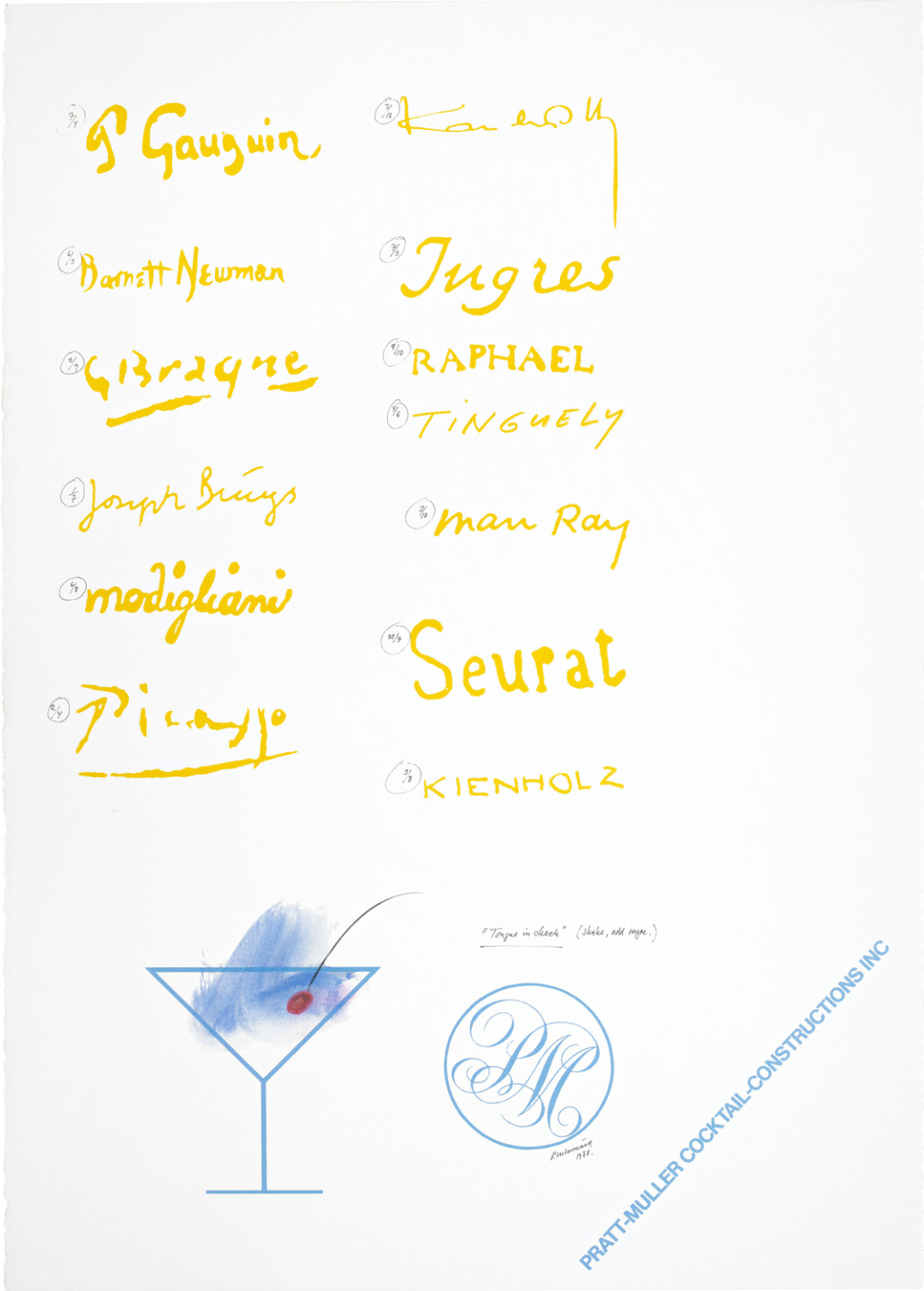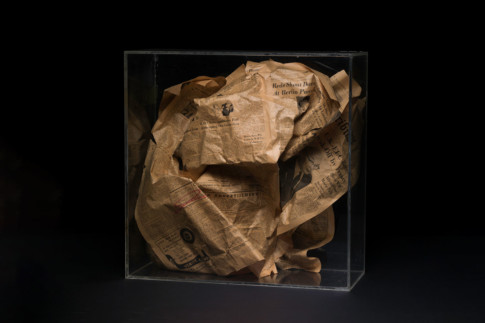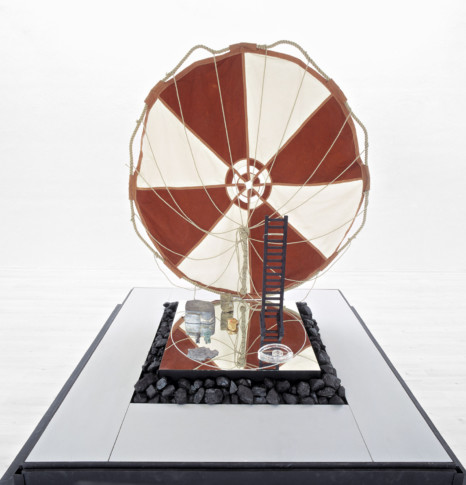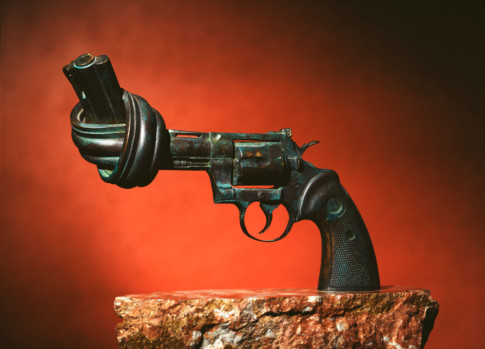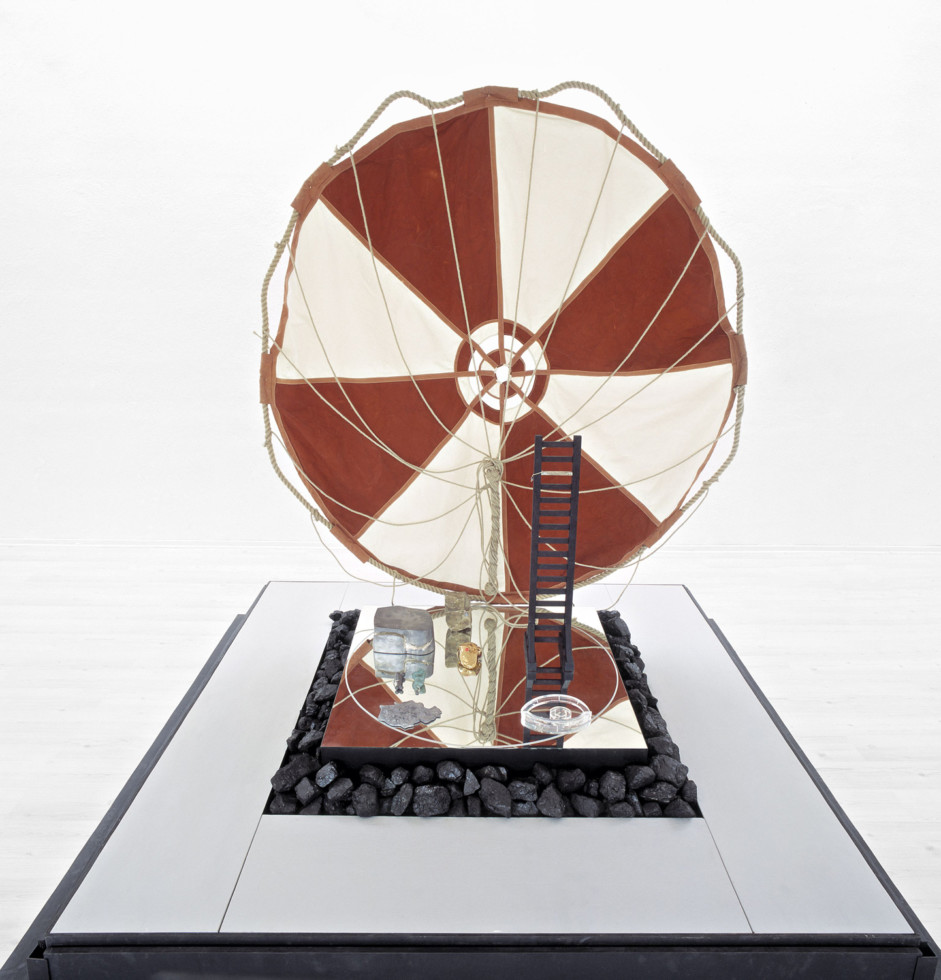
Carl Fredrik Reuterswärd, Kilroy II, 2000 © Carl Fredrik Reuterswärd / Bildupphovsrätt 2019
On some of the works in the exhibition Alias: CFR
Kilroy II
2000
Sail cloth/canvas, rope, wood, metal, stone, plastic, string, glass, coal
In 1962, the year before the holiday announcement was published in the ”New York Herald Tribune”, Carl Fredrik Reuterswärd had read “Kilroy was here” on a wall in New York, The phrase can be traced back to the Second World War when American soldiers wrote it wherever they happened to be. Reuterswärd saw Kilroy as both everyone and no one, a text written for anyone. An existential and symbiotic condition can be read into the complex ”Kilroy” project and the nine objects that are placed on a mirror disc according to the two sides “You” and “Me”. In the middle, the laser points straight down at Kilroy’s heart – it illuminates the encounter between You and Me and becomes an immaterial personification of the space in between.
Kilroyalty
1963
Chalk, newspaper
It is not immediately apparent where the extensive and elusive project ”Kilroy” starts and ends, neither in time nor in form. A likely period of time for the project is, however, implied by the announcement that Carl Fredrik Reuterswärd placed in the ”New York Herald Tribune” in January 1963. During his self-proclaimed “holiday” Reuterswärd aimed to create nine objects under the unifying title ”Kilroy”. At the time, Reuterswärd perceived the prevailing art scene as disheartening and the holiday should perhaps be interpreted as a desirable break from an increasingly commercial and conformist climate in the art world.
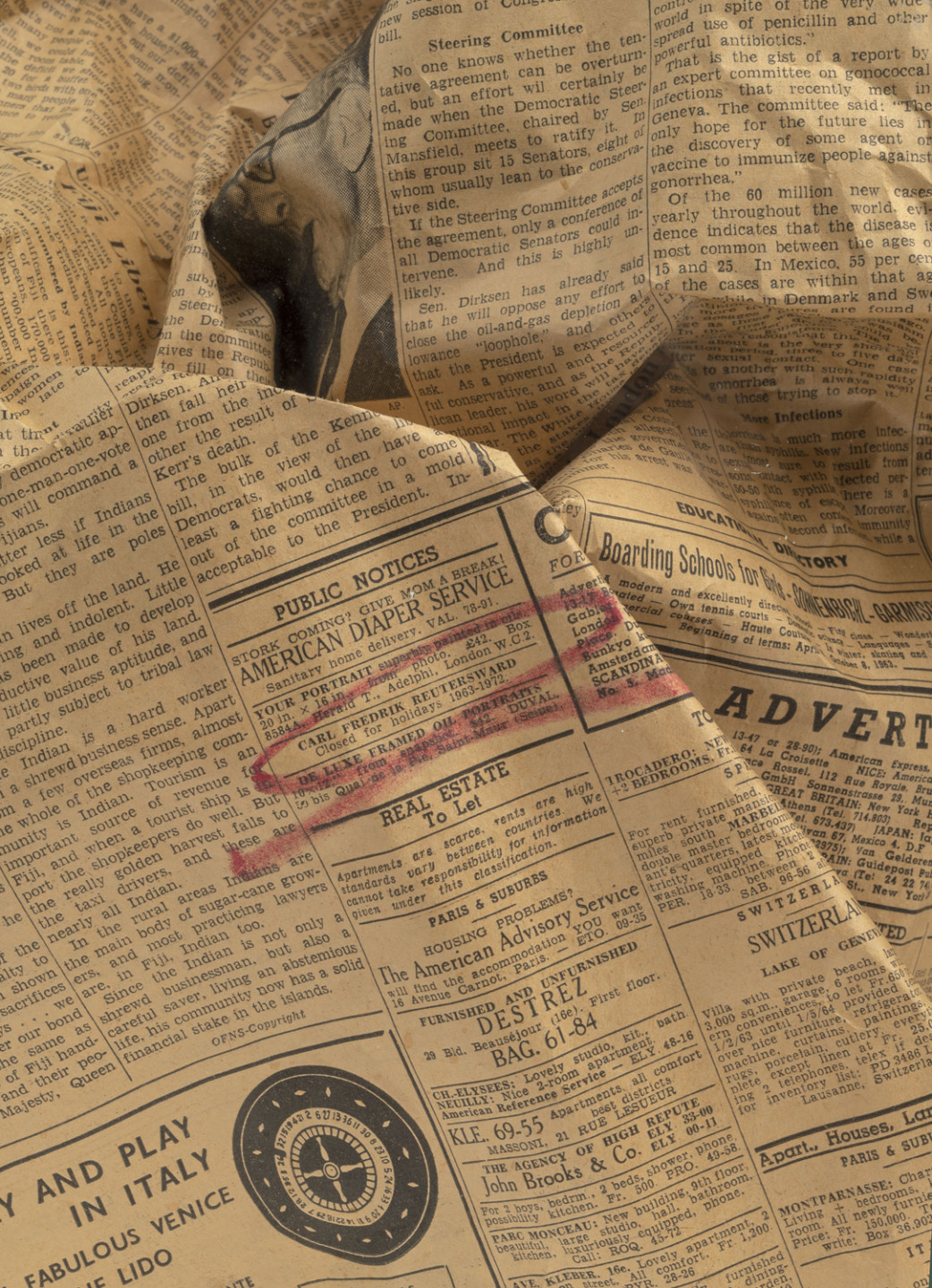
Laser
1971
Colour photograph
Carl Fredrik Reuterswärd was an early adopter of new technology such as lasers and holograms. Using lasers allowed him to expand the sculptural object and its expressive potential to become both material and immaterial, both enduring and fleeting. Reuterswärd started using laser as early as 1962 to create more enduring poetical works in the series, for example the Perspex discs with the laser-engraving “KILROY”. It was the engineer Billy Klüver who showed Reuterswärd how to work with laser. “My mental perception changed. Here was the tool that broke with all traditions!”, Reuterswärd wrote later. This exhibition includes Hans Hammarskiöld’s photographs, as well as lasers and a hologram related to ”Kilroy”.
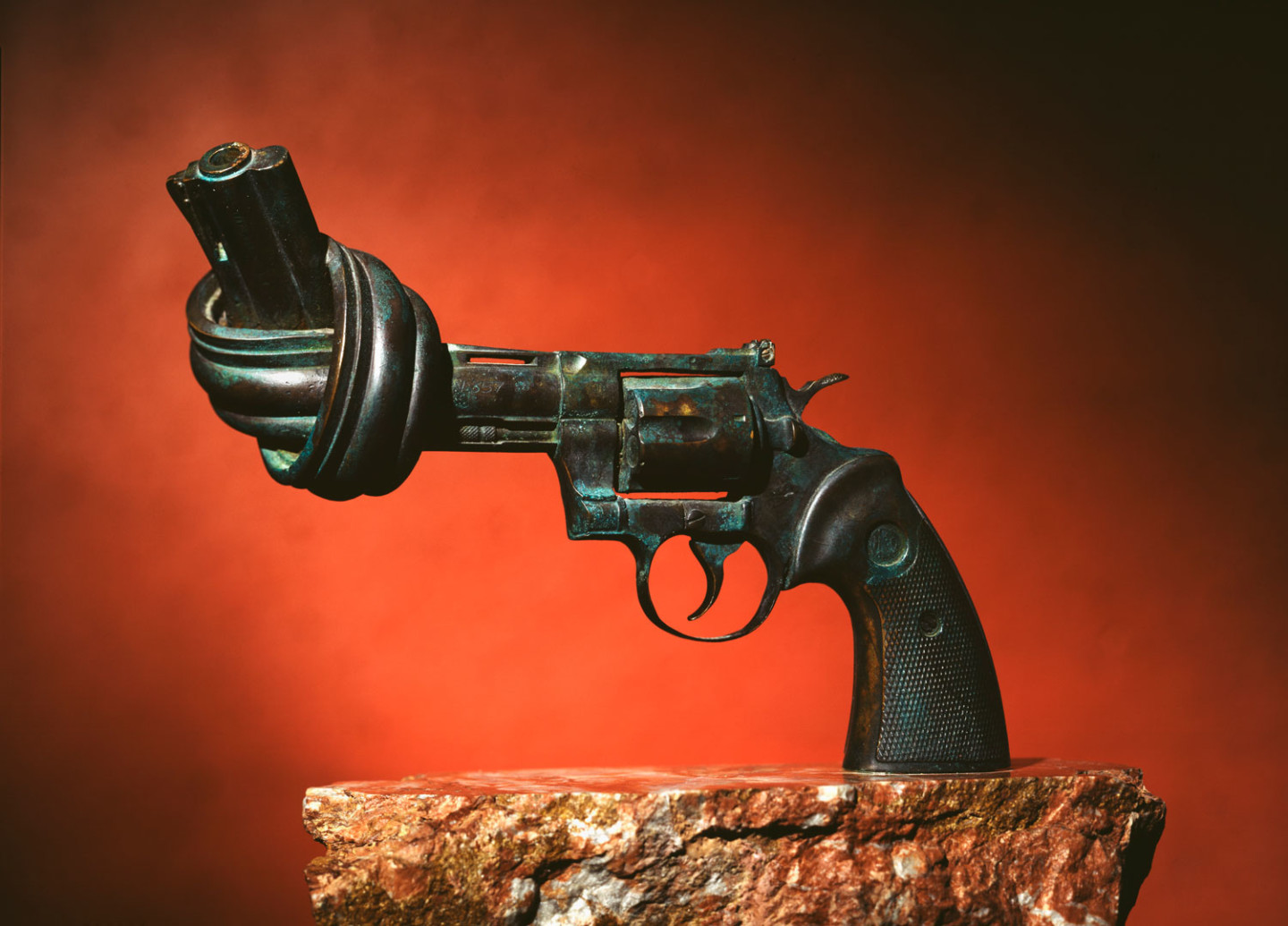
Non-Violence
1982
Bronze
One of Carl Fredrik Reuterswärd’s best-known projects is ”Non-Violence” – the revolver with the knotted barrel. The first sculpture was placed outside the UN headquarters in New York in 1988. The knotted gun barrel can be interpreted as a pacifist statement with humorous elements, as well as a mockery of supposedly hard manliness with its transformation of a weapon into a soft and pliant organ. The knot can also be read as a reminder – to remember to never use violence, never wage war. After his stroke, Reuterswärd continued to draw different versions of the revolver, but the shapes and lines are softer, more fragile and simultaneously more complex.
Dr Arnold Forel Pratt-Müller
Dr. Arnold Forel Pratt-Müller founded his empire consisting of words, objects, letters, inventories and aeroplane tickets in 1973. He realised the importance of the icons of Western art and culture early on, and claimed that we should concentrate on the most important component of art: the signature. Dr. Pratt-Müller and his empire are unsurprisingly a humorous and thinly disguised criticism of the commercial art market, staged and orchestrated by Carl Fredrik Reuterswärd himself. This exhibition includes, among others, the works ”The Complete List of Invented Artists” (1973), ”Zwei Fliegen auf einen Schlag” (1975) and ”Jesus Christie’s Halleluja Sotheby-Parke Bernet!” (1973–74) that can be traced back to Dr. Pratt-Müller’s empire.
